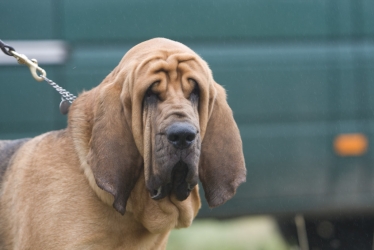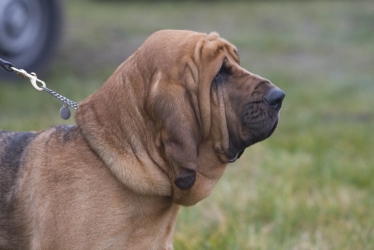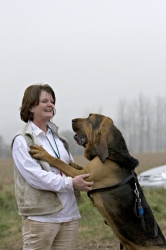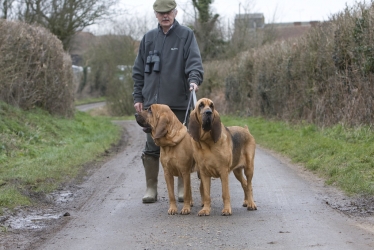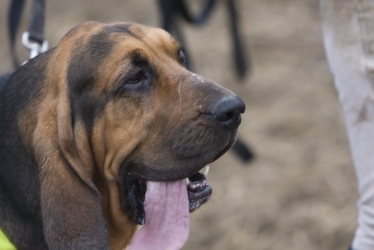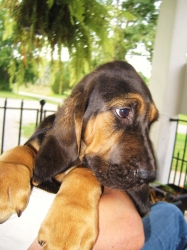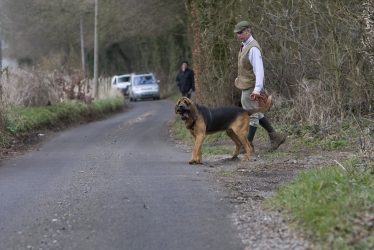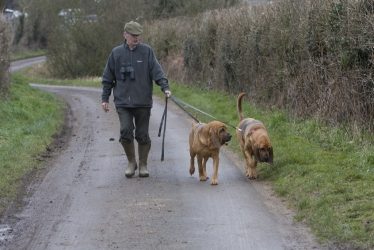Bloodhound
Bloodhound Behavior and Temperment
| Indoor Activity | Outdoor Activity | Vigor | Consistant Behavior |
| Dominance Strange Dogs | |
| Territorial | |
| Good With Children | |
| Good With Strangers |
History
The Bloodhound's history dates back to medieval Europe, where it was bred by monks, particularly in Belgium and France, to assist in tracking game and people. The breed's name, "Bloodhound," is believed to come from the term "blooded hound," meaning a hound of pure or noble blood. These dogs were prized for their keen sense of smell and ability to track scents over long distances, often in pursuit of game such as deer and boar.Bloodhounds were brought to England by the Normans and further developed by breeders to refine their scenting abilities. Over time, they became the go-to breed for tracking people, and their talents were soon recognized by law enforcement agencies. By the 19th century, Bloodhounds were widely used to track criminals and lost persons. The breed was introduced to the United States in the 1800s and quickly became popular among hunters and law enforcement officers.
The American Kennel Club (AKC) recognized the Bloodhound in 1885, and it remains one of the most revered scent hounds today. Their legacy as exceptional trackers continues, and Bloodhounds are often employed in search and rescue missions, where their tracking skills can mean the difference between life and death.
Temperament
Bloodhounds are known for their gentle, patient, and affectionate temperament. Despite their large size and somewhat imposing appearance, they are friendly and good-natured dogs that generally get along well with people, including children. They are known for being particularly patient with children, making them excellent family pets.Bloodhounds are highly intelligent, but they can also be stubborn and independent, traits that are common in hounds. Their strong tracking instinct can make them challenging to train, as they tend to follow their noses wherever they lead. This breed requires a firm but gentle hand in training, as they respond best to positive reinforcement rather than harsh discipline. Socialization from a young age is crucial to ensure they grow into well-behaved and confident adults.
Due to their strong tracking instinct, Bloodhounds should always be kept on a leash or in a securely fenced area when outdoors, as they are prone to wandering off in pursuit of an interesting scent.
Physical Characteristics
The Bloodhound is a large, muscular dog with a distinctive appearance characterized by loose skin, particularly around the face and neck, and long, drooping ears. Their skin folds are believed to help trap scent particles, enhancing their already formidable sense of smell. Bloodhounds have deep-set eyes that give them a sad or thoughtful expression, and their coat is short and dense, usually in colors such as black and tan, liver and tan, or red.Below is a table comparing the average height and weight of male and female Bloodhounds: Characteristic Male Female Height 25 to 27 inches (64-69 cm) 23 to 25 inches (58-64 cm) Weight 90 to 110 pounds (41-50 kg) 80 to 100 pounds (36-45 kg)
Males are generally larger and more robust, while females are slightly smaller and more refined. Both sexes share the breed’s characteristic loose skin and droopy appearance, which are key features of the Bloodhound.
